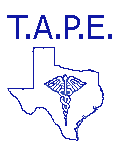Skin and Hair Issues
Folliculitis or Hidradenitis Suppurativa
Folliculitis is an infection of the hair follicle. Each hair on the body grows out of a
tiny pore-like indention in the skin called a follicle. Folliculitis can be found on
any part of the body that has hair, but it is most common on the face, scalp, and areas
rubbed by clothing, such as the thighs and groin.
Folliculitis is usually caused by bacteria, especially the type called staph
(Staphlococcus). However, it can also be caused by yeast and other types of
fungi. Folliculitis caused by a fungus is most often seen in people who
have an impaired immune system.
Often folliculitis develops because of damaged hair follicles. Shaving or wearing
clothes that rub the skin can irritate the follicles. They can also become
blocked or irritated by substances like makeup, sweat or oils. Once the follicles
are injured, they are more likely to become infected.
Folliculitis usually looks like red pimples with a hair in the center of each one.
The pimples can itch or burn or have pus in them. Mild folliculitis usually heals
on its own in about two weeks. There are over-the-counter creams that can help
relieve itching and aid in healing. If the infection does not go away, an
antibiotic or antifungal cream will usually clear up the condition. However, if
the folliculitis does not go away with treatment or breakouts continue to reoccur,
especially if the look like boils, this could be hidradenitis suppurativa (HS).
HS is also known as acne inversa.
Hidradenitis suppurativa is a chronic skin condition that begins as pimple-like
lumps or pea-sized to marble-sized lumps under the skin. It commonly occurs
around hair follicles, such as underarms, groin, under breasts or between the
buttocks. HS can affect single or multiple areas on the body. The lumps can
be painful. If they break open and drain pus, the pus is often foul smelling.
HS affects at least one percent of the population. Factors that may increase
the risk for having HS may include age (commonly occurs in young adults), women
are more likely to develop HS than are man and it can be inherited.
HS can cause scarring, pitting or pigmented patches of skin. Open sores and
scar tissue may cause limited or painful movement, especially when the
disease affects the underarms or thighs.
The lumps and bumps can change. One week it is leaking four smelling pus
from breakouts. The next week, the breakouts have cleared, and scars are the only thing left on the skin.
A dermatologist should be consulted if the pimples, lumps or bumps leaking
fluid do not go away in a reasonable amount of time. A dermatologist should
be consulted, and treatments should be followed.
The dermatologist may use one or several of the treatments listed below:
- Antibiotics; helps fight infection.
- Acne washes and medicines
- Bleach bath
- Biologics: these medicines work on the immune system. Some biologics require self-injections; others require an infusion at the hospital or clinic.
- Corticosteroid: oral pills or an injection into the breakout.
- Diabetes drug, metformin may help
- Hormone therapy: some women who have HS get relief by taking birth control pills, spironolactone, or any other medication that regulates hormones. These medications can help reduce the pain and the amount of draining fluid.
- Other treatments may include methotrexate, oral retinoid or surgery.
- Wearing loose fitting clothing can reduce the friction.
Accreditations



